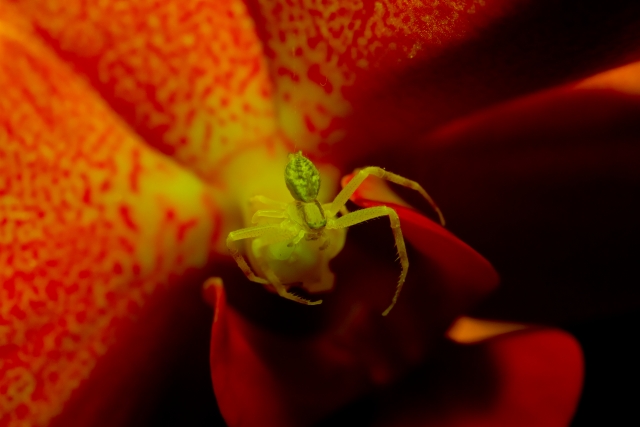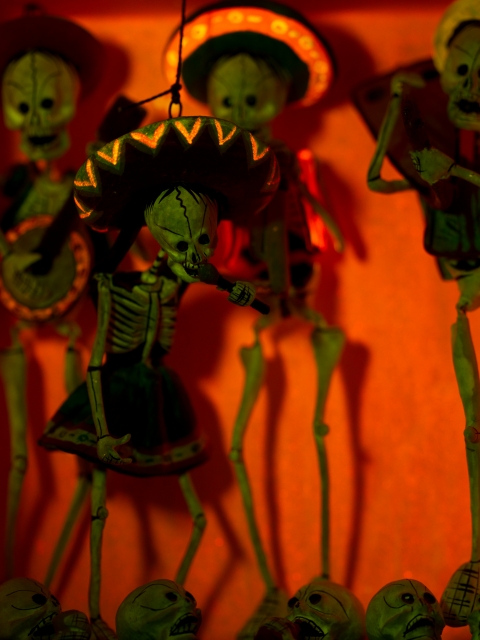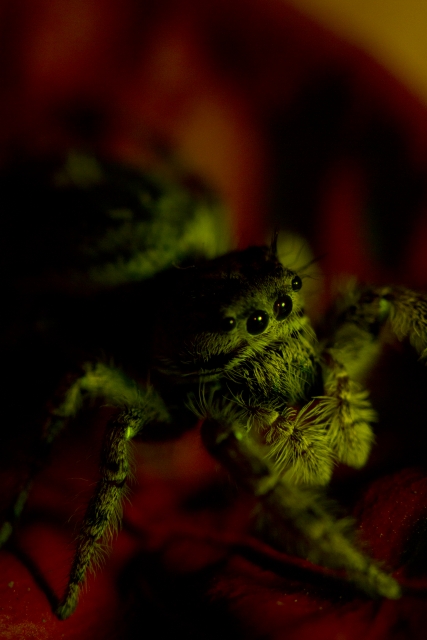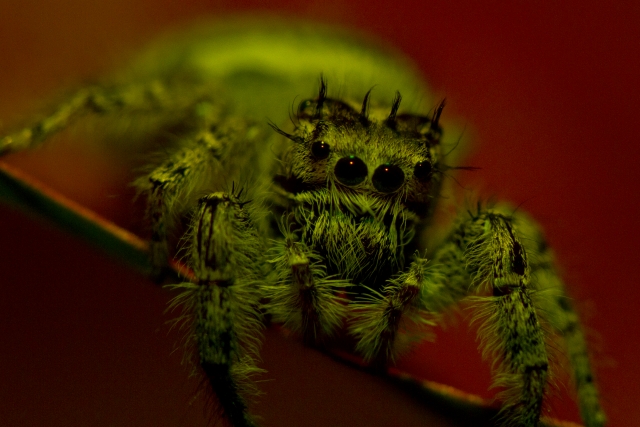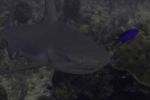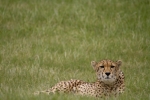fluorescence
Fluorescing Crab Spider (part 1)
ktuli — Fri, 05/03/2013 - 09:26
Just a quick post today, I'll provide more background on this later...
Technical Data: Canon EOS 7D, Canon EF 100mm f/2.8L Macro IS USM with Yellow 12 Filter and unknown extension tubes, 1/120 sec at f/5. Image Stabilization on. ISO 800. Canon Speedlight 580EX II flash in auto mode and special fluorescence excitation filter. RAW processing in Adobe Camera Raw.
- Bill
Dia de los Muertos Vignette (part 2)
ktuli — Sat, 03/02/2013 - 09:03
As promised, here is the shot of that vignette with the fluorescence gear. It is fun finding things around the house the fluoresce, and I felt this subject really looked good with it.
Technical Data: Canon EOS 7D, Canon EF 100mm f/2.8L Macro IS USM with Yellow 12 Filter and unknown extension tubes, 1/30 sec at f/2.8. ISO 100. Canon Speedlight 580EX II flash in eTTL mode and special fluorescence excitation filter. RAW processing in Adobe Camera Raw.
- Bill
Turks and Caicos Explorer: Fluorescing Corals (part 2)
ktuli — Thu, 11/01/2012 - 20:16
OK - this stuff is too cool, so here's another blast of fluorescing coral photos (today we're doing all vertically oriented photos).
One extra cool thing to note in this batch... the top photos on either side show a closed coral and the same coral with its feeding polyp tentacles opened. Pretty awesome, no?
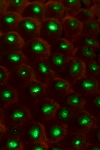 |
 |
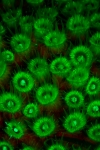 |
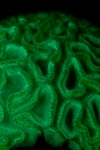 |
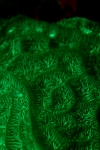 |
|
 |
 |
|
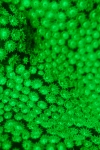 |
 |
Technical Data: Canon EOS 7D, Canon EF 100mm f/2.8L Macro IS USM with Yellow 12 Filter, 1/120th sec at f/8. Image Stabilization on. ISO 640. Ikelite Housing and Port with dual Ikelite 161 Strobes in TTL Mode both with NightSea BE3 Excitation Filters. Raw conversion in Photoshop CS5.
The second photo on both sides appear to be two different types of brain coral. One of the fun things we like to do during night dives is feed blood worms to the brain corals - I don't have any photos of that, but I do have a shot of an arrow crab catching a blood worm that I will share soon!
Stay tuned!
- Bill
Turks and Caicos Explorer: Fluorescing Corals (part 1)
ktuli — Wed, 10/31/2012 - 18:49
What up, fishes!?!
One of the things that I wanted to do on this dive trip was to check out the fluorescence on the reefs. You may have seen some of my land-based results with jumping spiders, but I still was blown away by the results I got.
The equipment I bought was made by NightSea and includes an excitation filter that goes on your light source (flash/strobe) and a yellow lens filter that acts to eliminate the color of the excited light. Basically, the excitation filters produce a bluish light that is the correct wavelength to induce the most common fluorescence responses - the yellow filter then removes that bluish light and returns things back to normal. We also had a special flashlight that had the blue excitation light, plus some yellow filters that went over the front of our masks so we could see the fluorescence effect that way too.
The results were stunning...
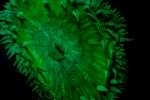 |
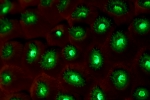 |
 |
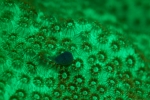 |
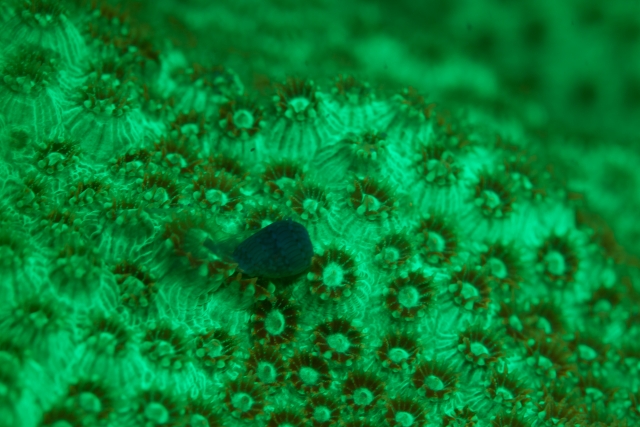 |
|||
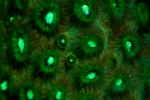 |
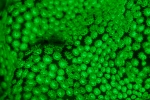 |
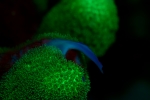 |
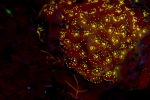 |
Not everything fluoresced on the reefs, so as we shined our lights along the corals, some would glow incredibly bright while others were just black and did nothing. I searched around for small critters like crabs and shrimp, but considering there were always hungry sharks or large horse-eyed jacks feeding during out night dives, it wasn't always the easiest thing to be looking for little stuff while not being able to see anything that wasn't fluorescing.
Maybe next time (and hopefully next time is soon!).
- Bill
Another Fluorescing Jumping Spider (part 2)
ktuli — Thu, 07/05/2012 - 20:42
Here's a vertical orientation with some more dramatic lighting for this fluorescing jumping spider...
Technical Data: Canon EOS 7D, Canon EF 100mm f/2.8L Macro IS USM with Yellow 12 Filter and unknown extension tubes, 1/120 sec at f/5. Image Stabilization on. ISO 800. Canon Speedlight 580EX II flash in auto mode and special fluorescence excitation filter. RAW processing in Adobe Camera Raw.
- Bill
Another Fluorescing Jumping Spider
ktuli — Wed, 07/04/2012 - 15:09
The jumping spiders seem to have vanished recently (I think due to wasps moving in), but I managed to find a couple the other day. This one is the same species as the female I have sitting on a bunch of eggs (which incidentally I think are starting to hatch). I figured I'd try the fluorescence photography again...
Technical Data: Canon EOS 7D, Canon EF 100mm f/2.8L Macro IS USM with Yellow 12 Filter and unknown extension tubes, 1/120 sec at f/5. Image Stabilization on. ISO 800. Canon Speedlight 580EX II flash in auto mode and special fluorescence excitation filter. RAW processing in Adobe Camera Raw.
I may have to look into a second flash with filter to increase the light output to make this kind of photography a bit easier and allow me to increase the depth of field (f/5 just is a bit too shallow).
- Bill
Fluorescing Jumping Spider
ktuli — Mon, 06/18/2012 - 21:16
Ok - I bought some new toys not too long ago, and their only function is to allow me to be able to take photographs of things that fluoresce. So far this has been very tricky because I only have some of the pieces, which means I have to take a photo to even be able to see if something fluoresces, and many times things just don't. Add on top of that, the fact that you can only do this in the dark, so focusing and just about everything is made much more difficult.
But tonight (with the help of my lovely wife/assistant who was on light and spider tracking detail), I managed a couple shots of a small (the shot below is at higher than 1:1 magnification) jumping spider on a leaf. To my utmost pleasure, the little fella does indeed fluoresce a nice green color, while the leaf fluoresces a lovely red (the spider is mainly a greyish-brown, and the leaf is normally green - in fact, if you look closely at the spider's shadow - you will see that the leaf that was shielded from the flash is indeed still green!).
This shot required me to focus, hold steady and then have Anya turn off the lights. I then fired off a frame or three and checked my results and tried again. The spider actually did sit still at this point, so I might have been able to use a tripod, but at this point, I was still working handheld.
Regardless, the results are just super cool.....
Technical Data: Canon EOS 7D, Canon EF 100mm f/2.8L Macro IS USM with Yellow 12 Filter, 1/250 sec at f/7.1. Image Stabilization on. ISO 400. Canon Speedlight 580EX II flash in auto mode and special fluorescence excitation filter. RAW processing in Adobe Camera Raw.

